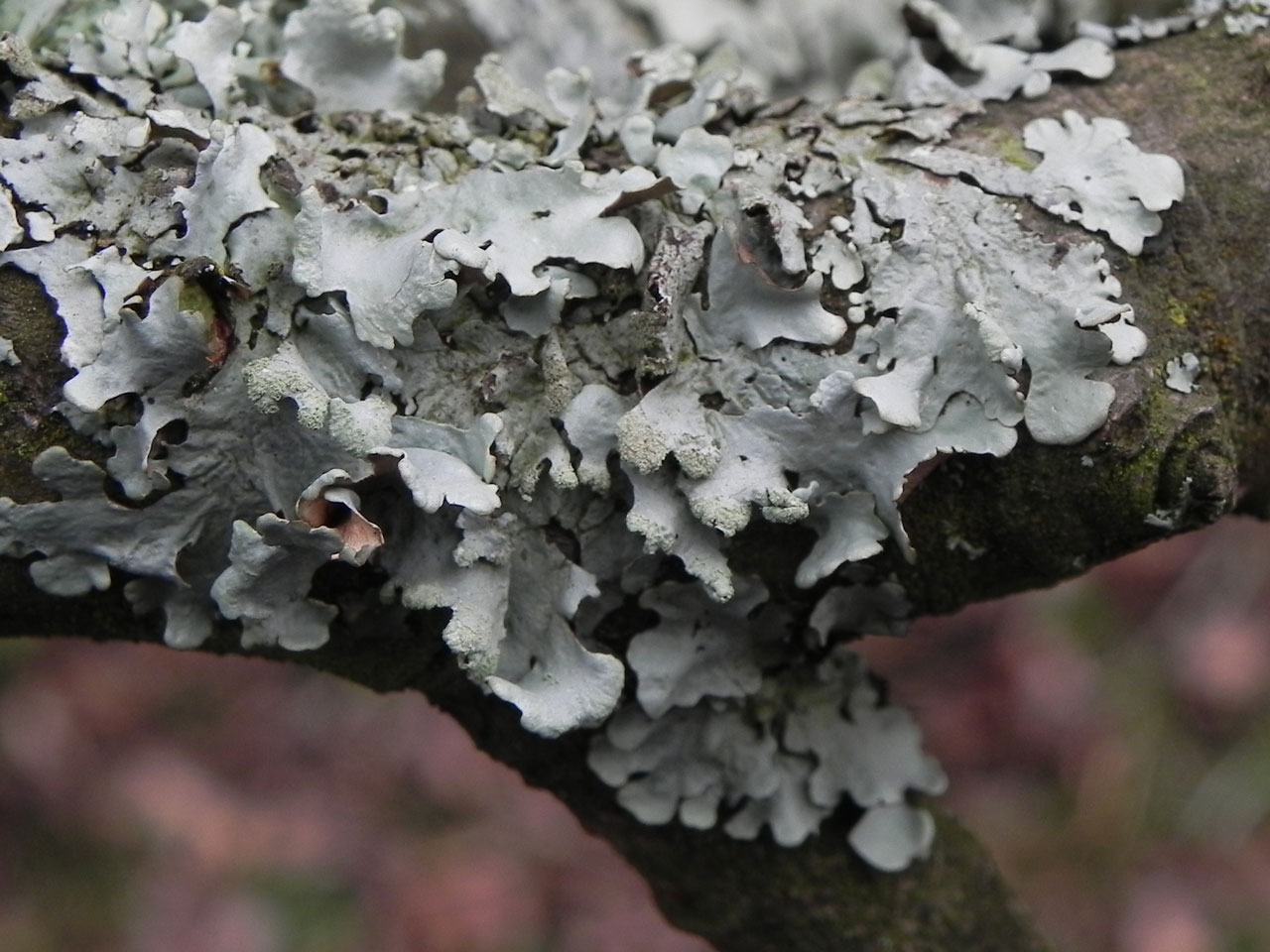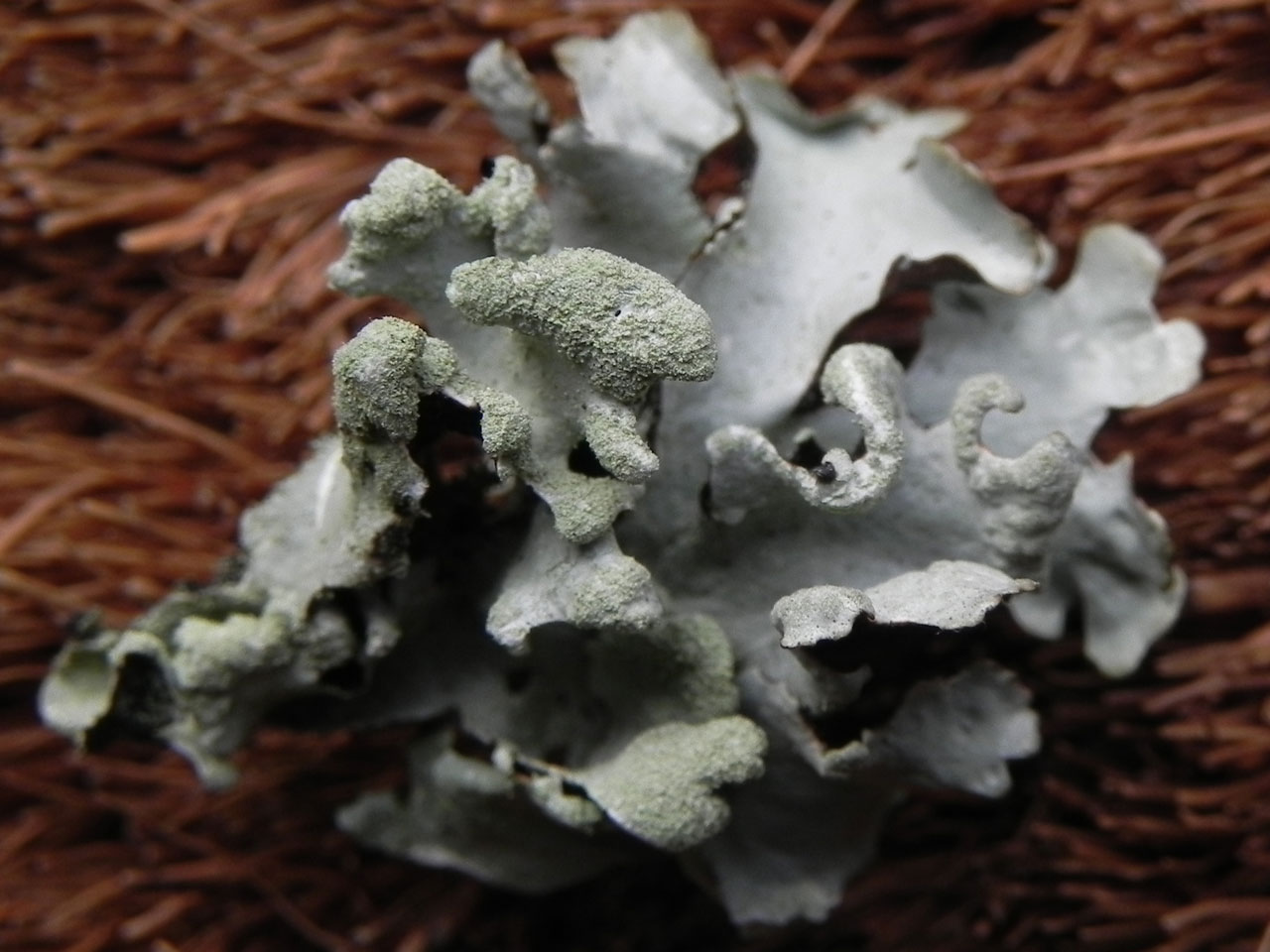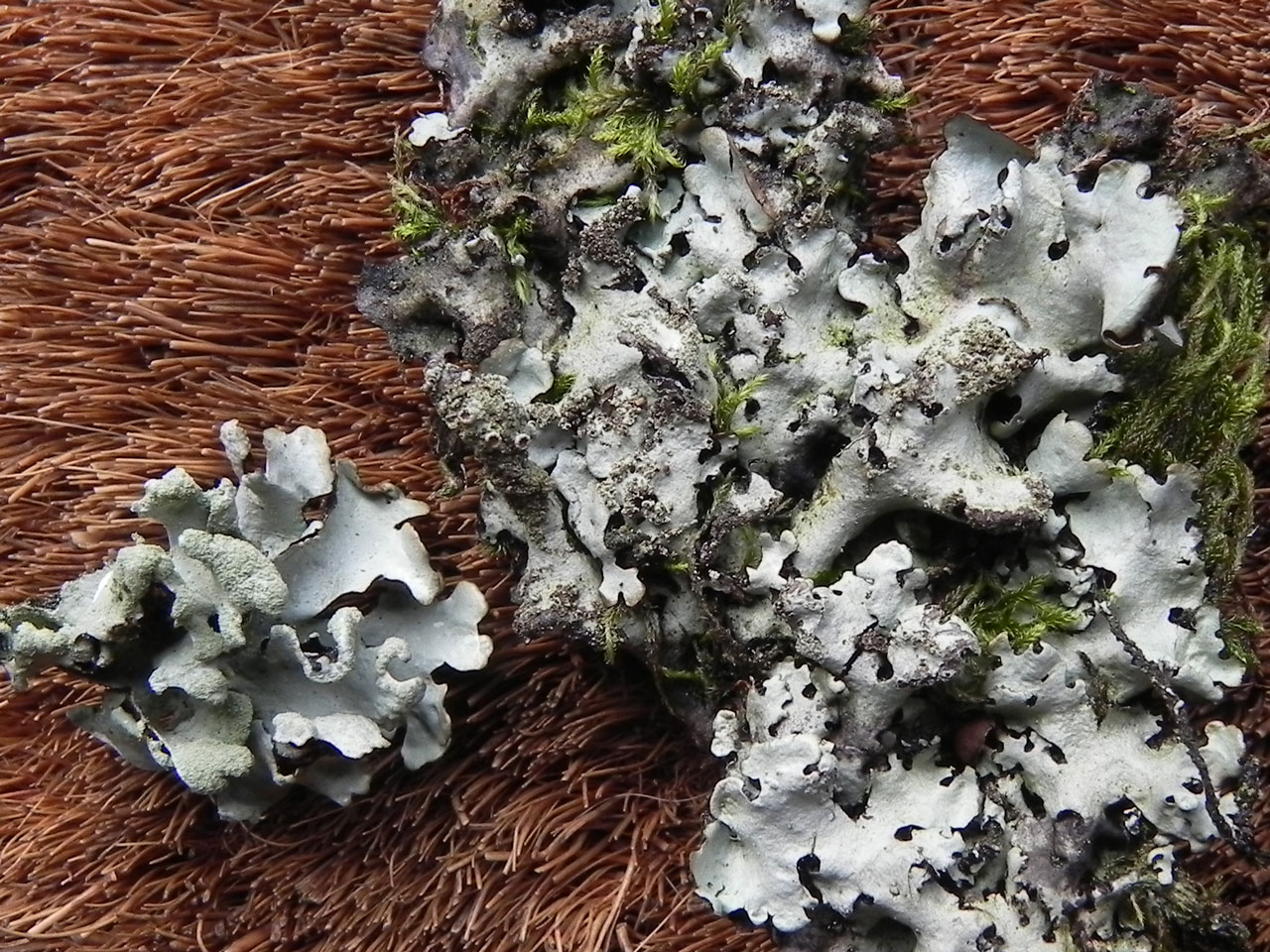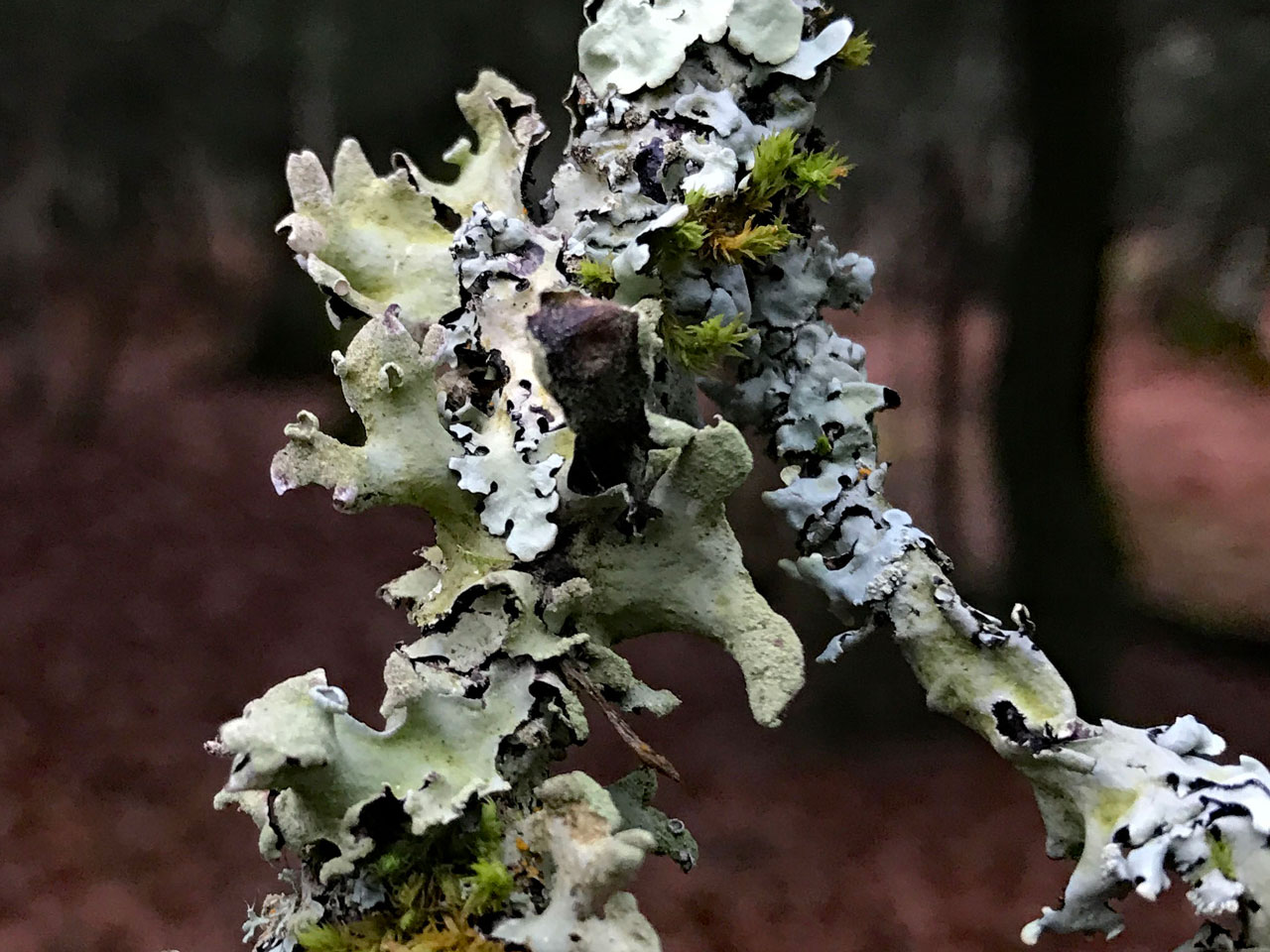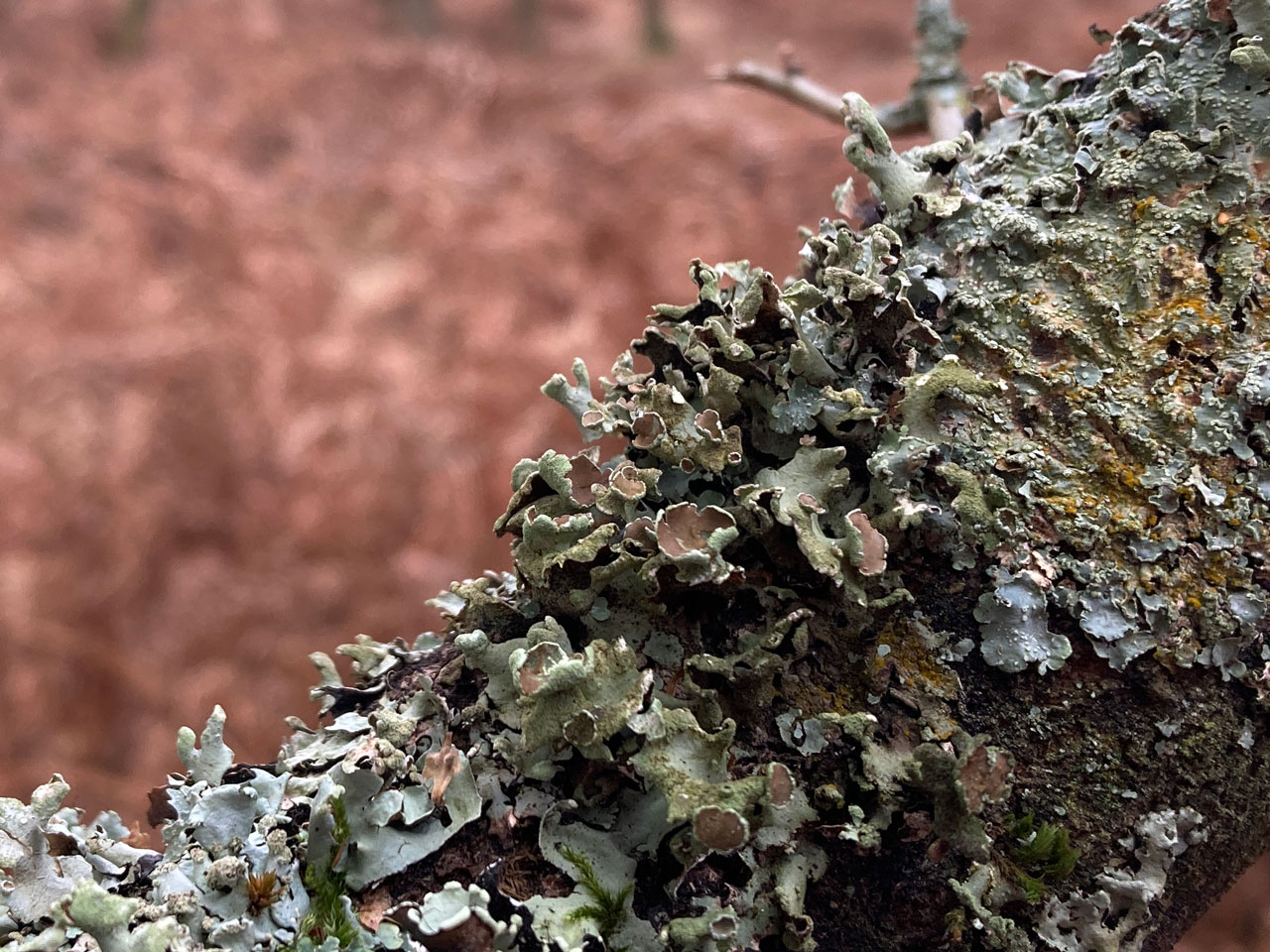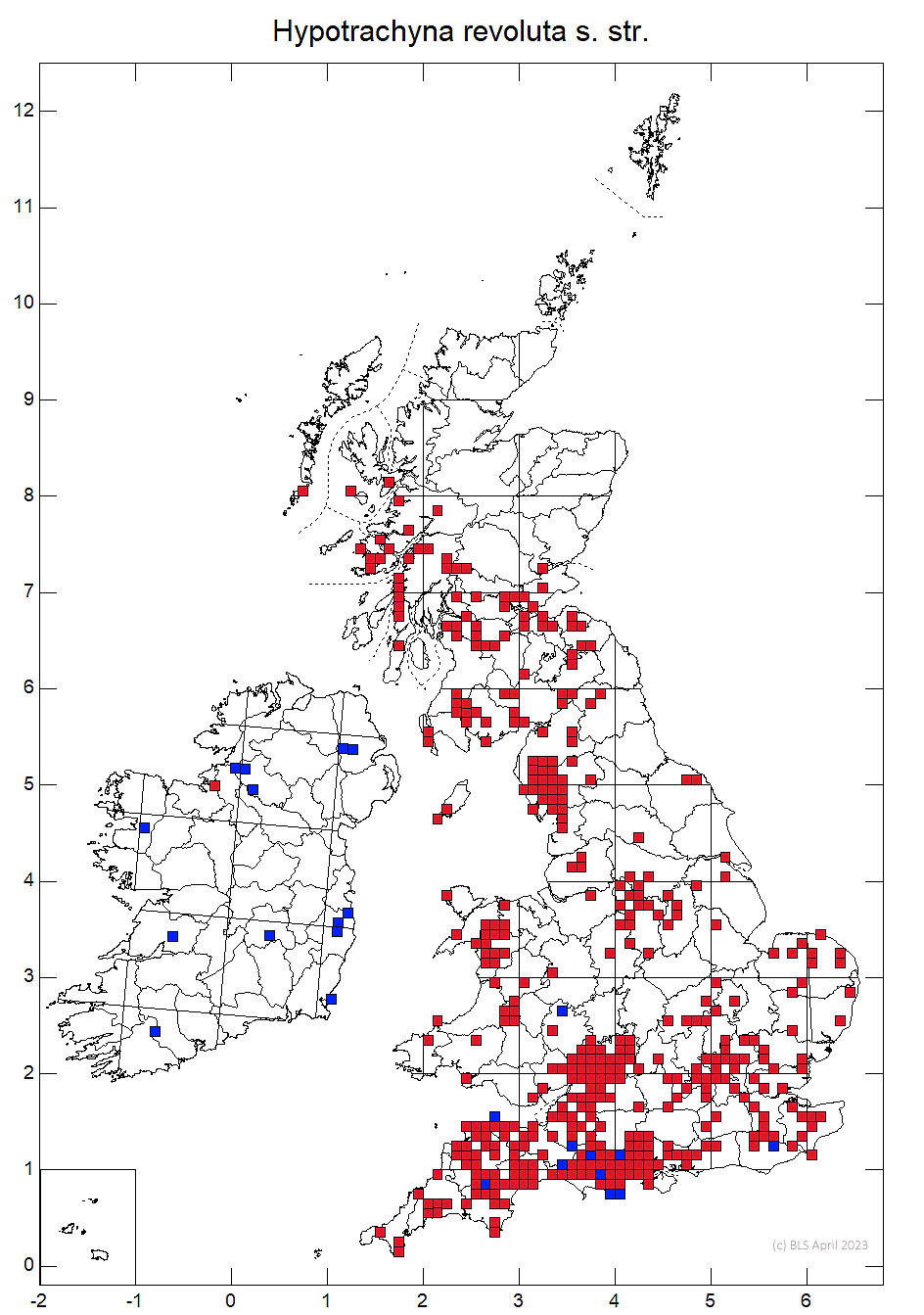A common and widespread lichen with Hypotrachyna revoluta s. str. distinguished from H. afrorevoluta quite recently. It is similar to this species but with marginal lobes that are raised, and with soralia laminal mainly on or near lobe ends. Hypotrachyna revoluta tends to be more common on trees in eastern districts with higher nitrogen deposition and Hypotrachyna afrorevoluta in oceanic areas and on rock.
Thallus 1–4 (–6) cm diam., rather compact, sometimes coalescing and forming extensive patches; lobes 2–5 mm broad, appressed, separate but ± overlapping towards the centre, rounded, often ± indented, axils rounded but not markedly sinuose, revolute at the tips; upper surface grey or grey-green, smooth, ± matt; marginal cilia very sparse, usually absent, sorediate; soralia laminal, irregularly spreading, ± diffuse, mainly on or near lobe ends, ± concolorous with the thallus or darker in full light; lower surface black, ± rhizinate to margins, rhizines simple, forked or ± dichotomously branched. Apothecia rare; disc to 6 mm diam.; thalline margin ± sorediate. Ascospores 11–16 × 8–10 μm, broadly ellipsoidal to almost spherical. Cortex K+ yellow; medulla C+ pink-red, K–, KC+ red, Pd–, UV- (atranorin, gyrophoric acid [major], lecanoric acid [minor] and related accessory substances [including those in the hiascic acid group]).
See discussion under H. afrorevoluta. Unusual for a Hypotrachyna in bearing what appear to be marginal cilia and also lacking the distinct dichotomously branched rhizines typical of this genus. H. britannica is also similar, with an almost identical chemistry (save from some accessory metabolites), but that species has narrow parallel-sided lobes, is mainly coastal and occurs almost exclusively on rock. Only identifiable when mature, with the soralia well developed, younger material is not distinguishable from H. afrorevoluta or even the isidiate H. minarum.
Common on wayside and woodland trees and shrubs, more rarely on weakly acidic rocks and walls in inland and maritime situations.

Widely distributed on bark in a range of conditions from nutrient poor to nutrient enriched, but a bit more frequent in the latter conditions. Throughout Britain and Ireland except northern and north eastern Scotland.
Cannon, P., Divakar, P., Yahr, R., Aptroot, A., Clerc, P., Coppins, B., Fryday, A., Sanderson, N. & Simkin, J. (2023). Lecanorales: Parmeliaceae, including the genera Alectoria, Allantoparmelia, Arctoparmelia, Brodoa, Bryoria, Cetraria, Cetrariella, Cetrelia, Cornicularia, Evernia, Flavocetraria, Flavoparmelia, Hypogymnia, Hypotrachyna, Imshaugia, Melanelia, Melanelixia, Melanohalea, Menegazzia, Montanelia, Nesolechia, Parmelia, Parmelina, Parmeliopsis, Parmotrema, Platismatia, Pleurosticta, Protoparmelia, Pseudephebe, Pseudevernia, Punctelia, Raesaenenia, Tuckermannopsis, Usnea, Vulpicida and Xanthoparmelia. Revisions of British and Irish Lichens 33: 1-98.
Text by N A Sanderson, based on Cannon et al (2023).
